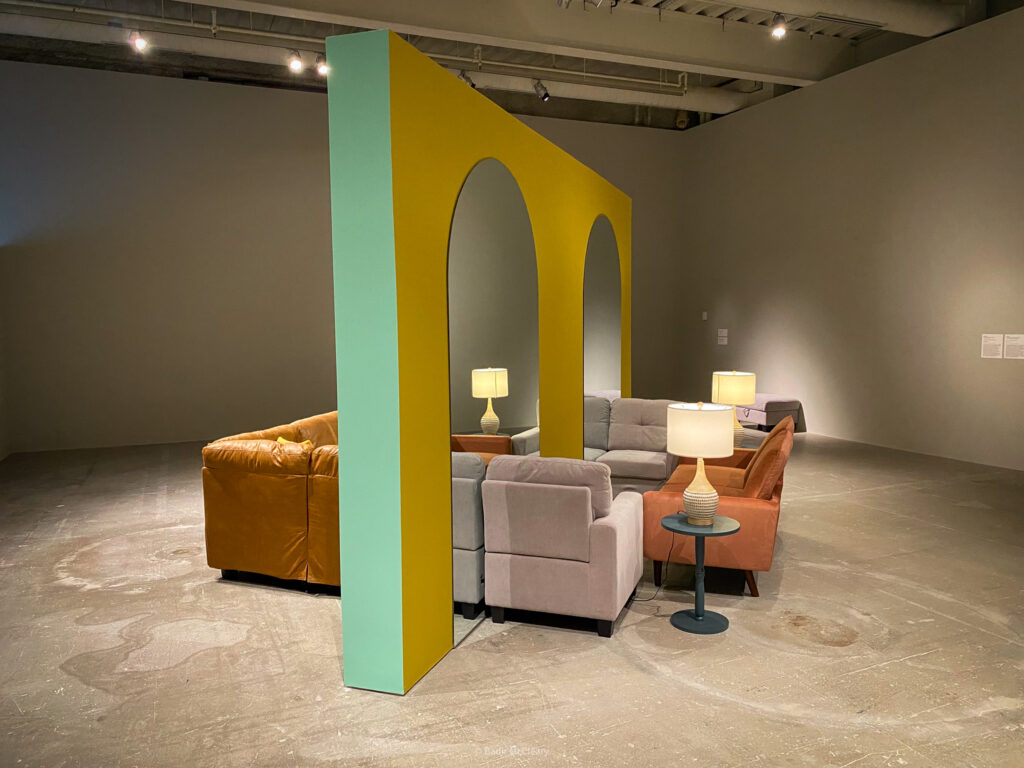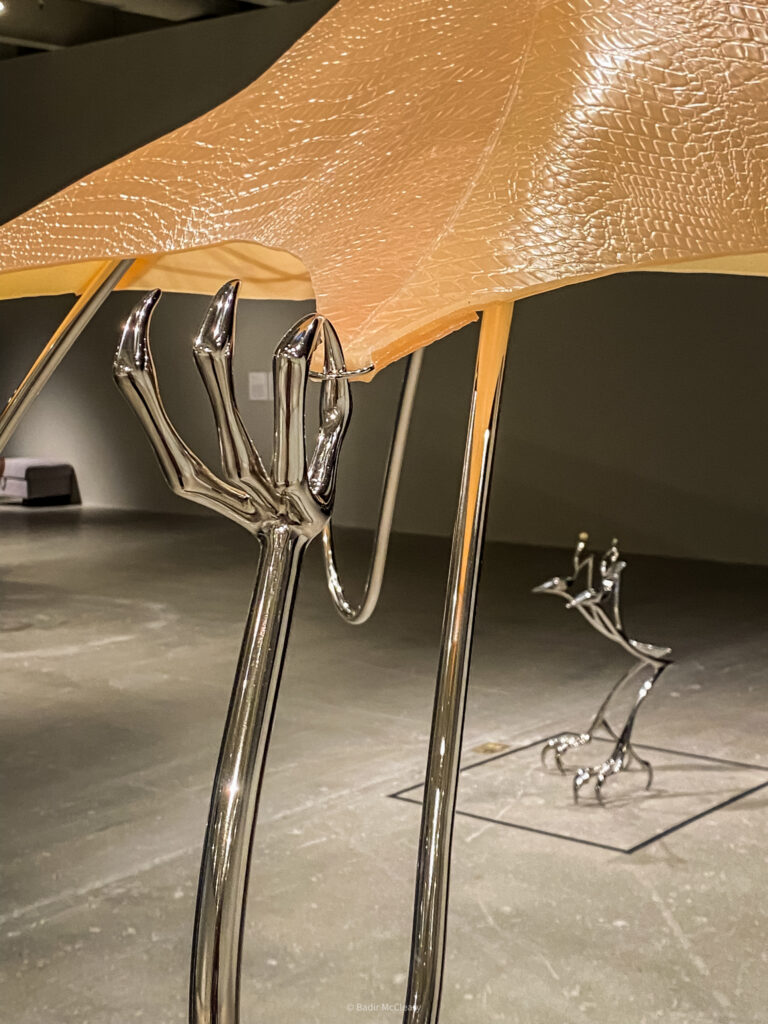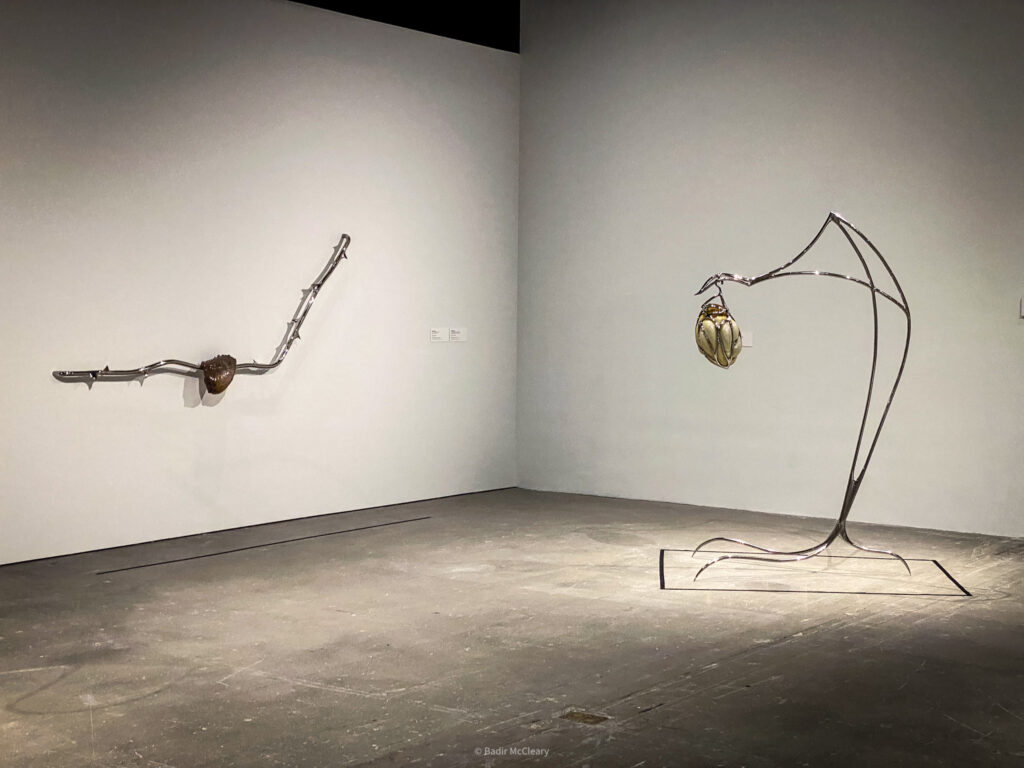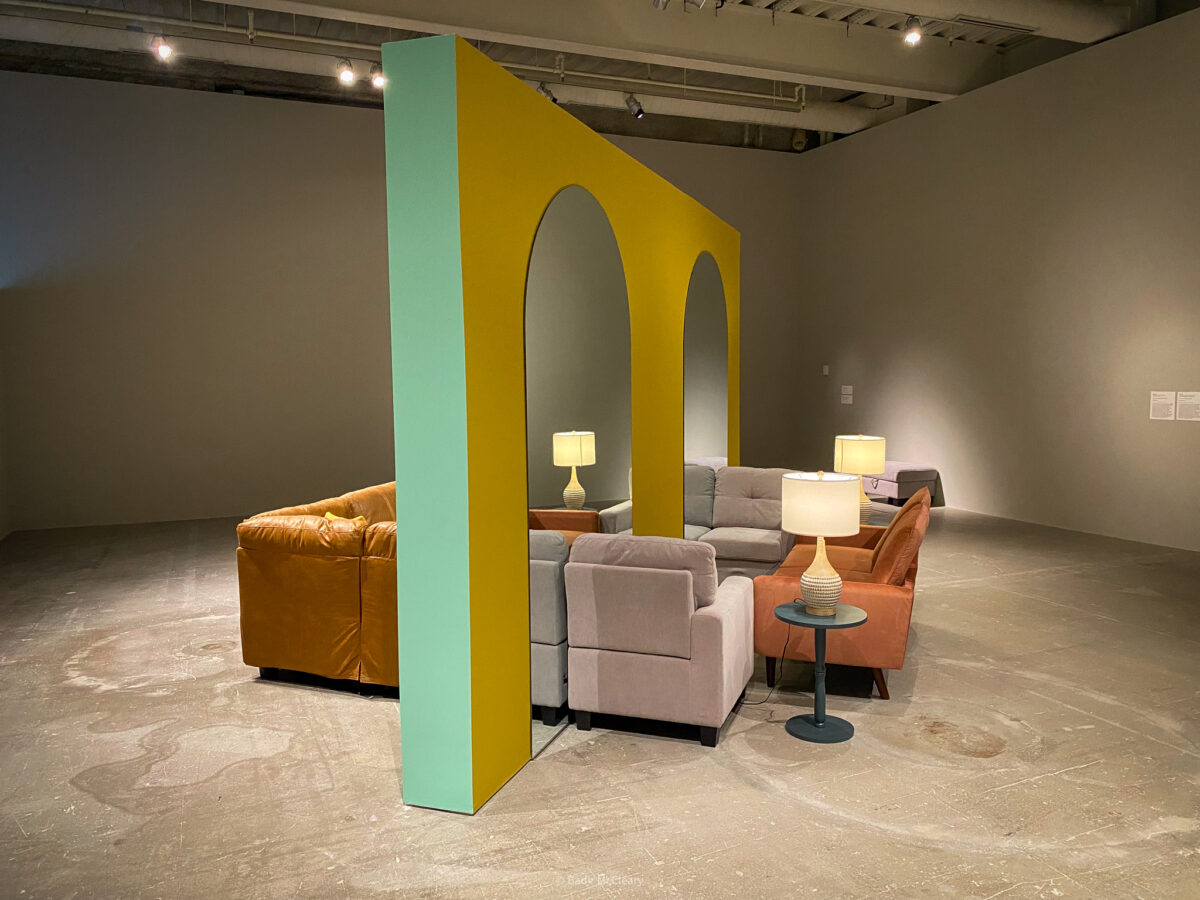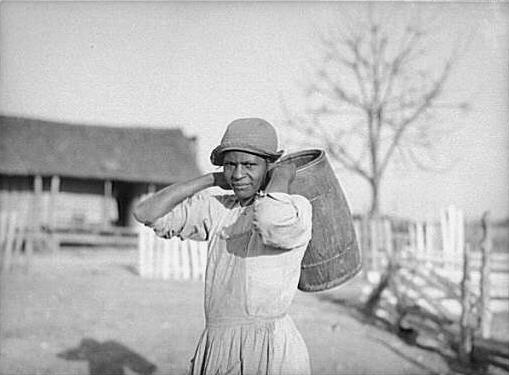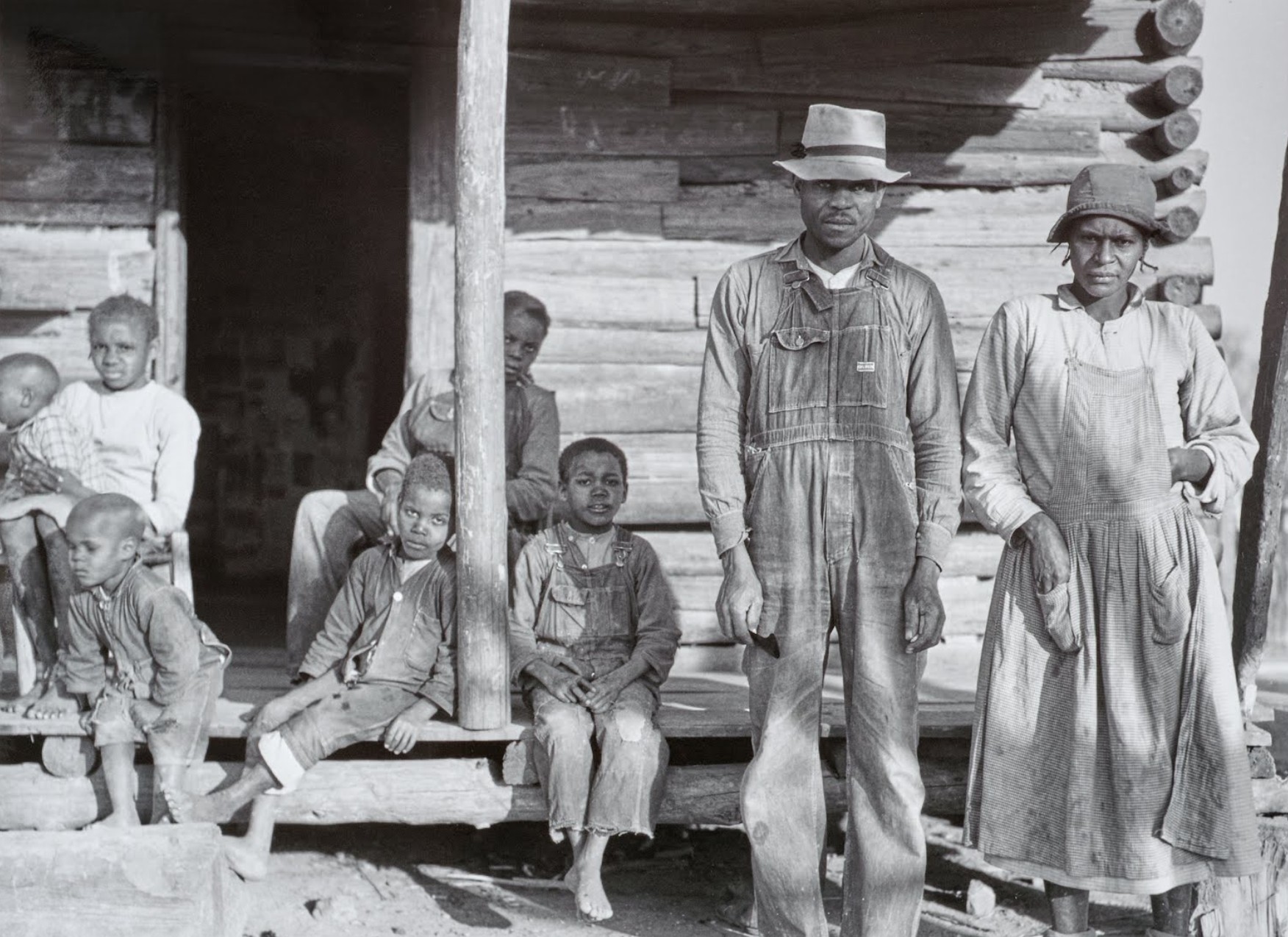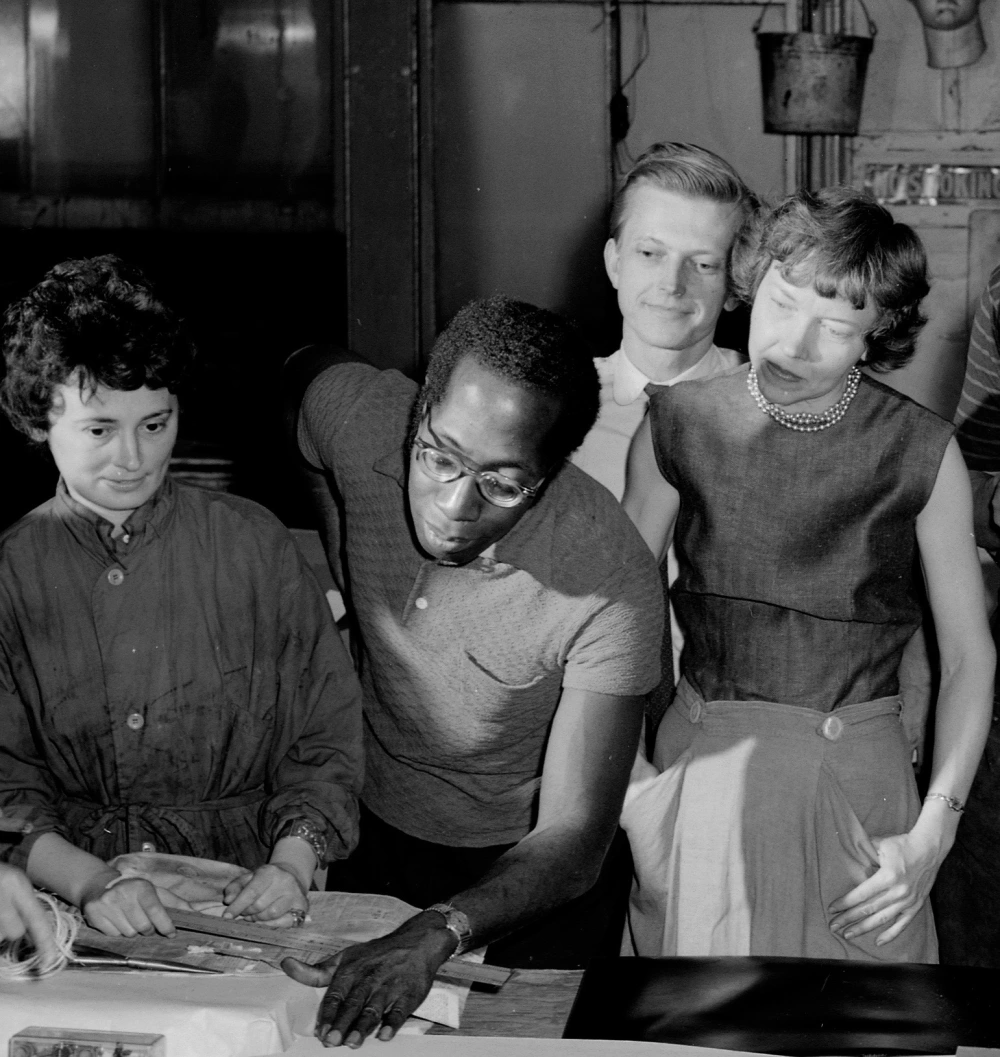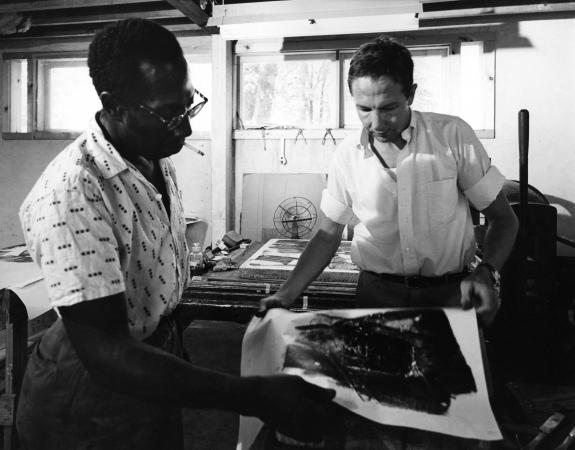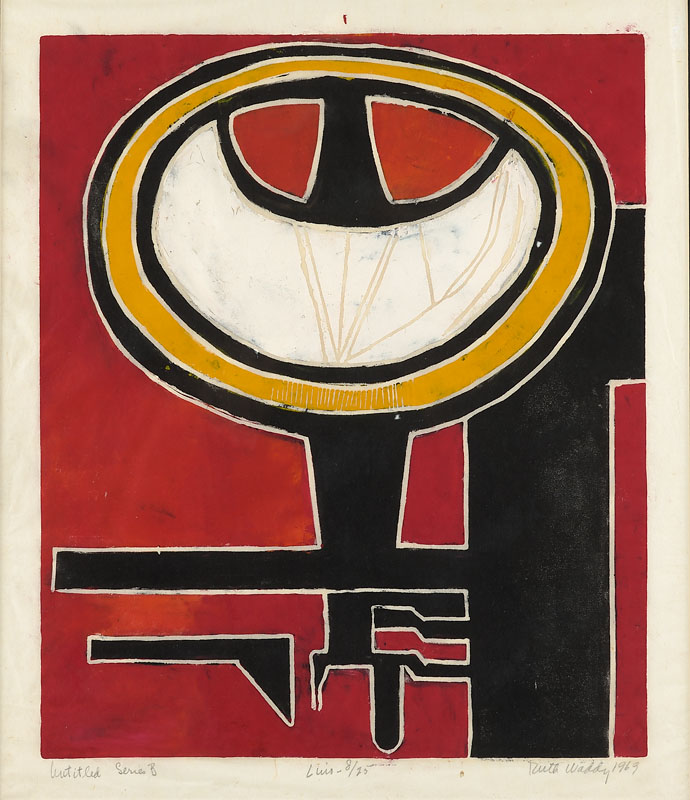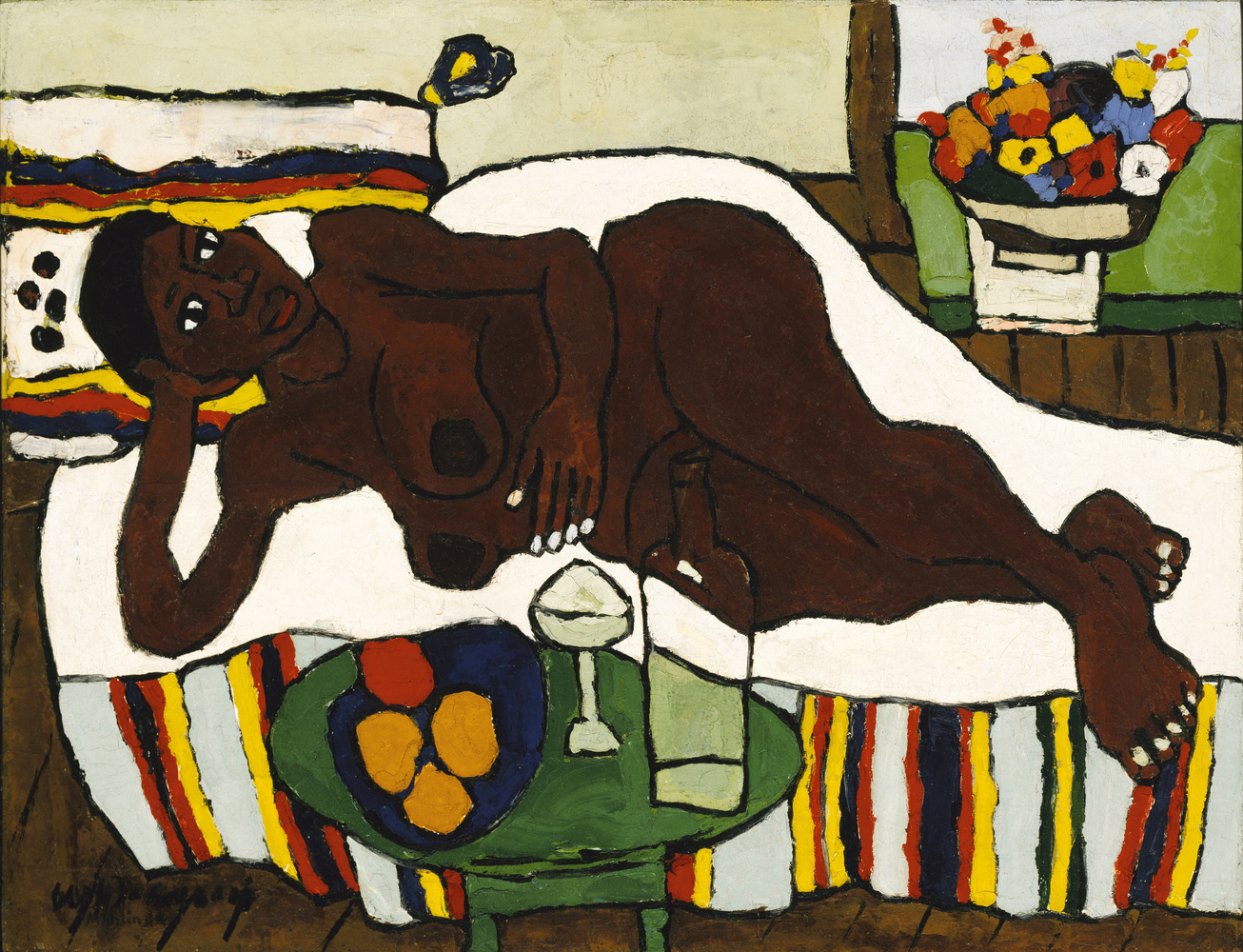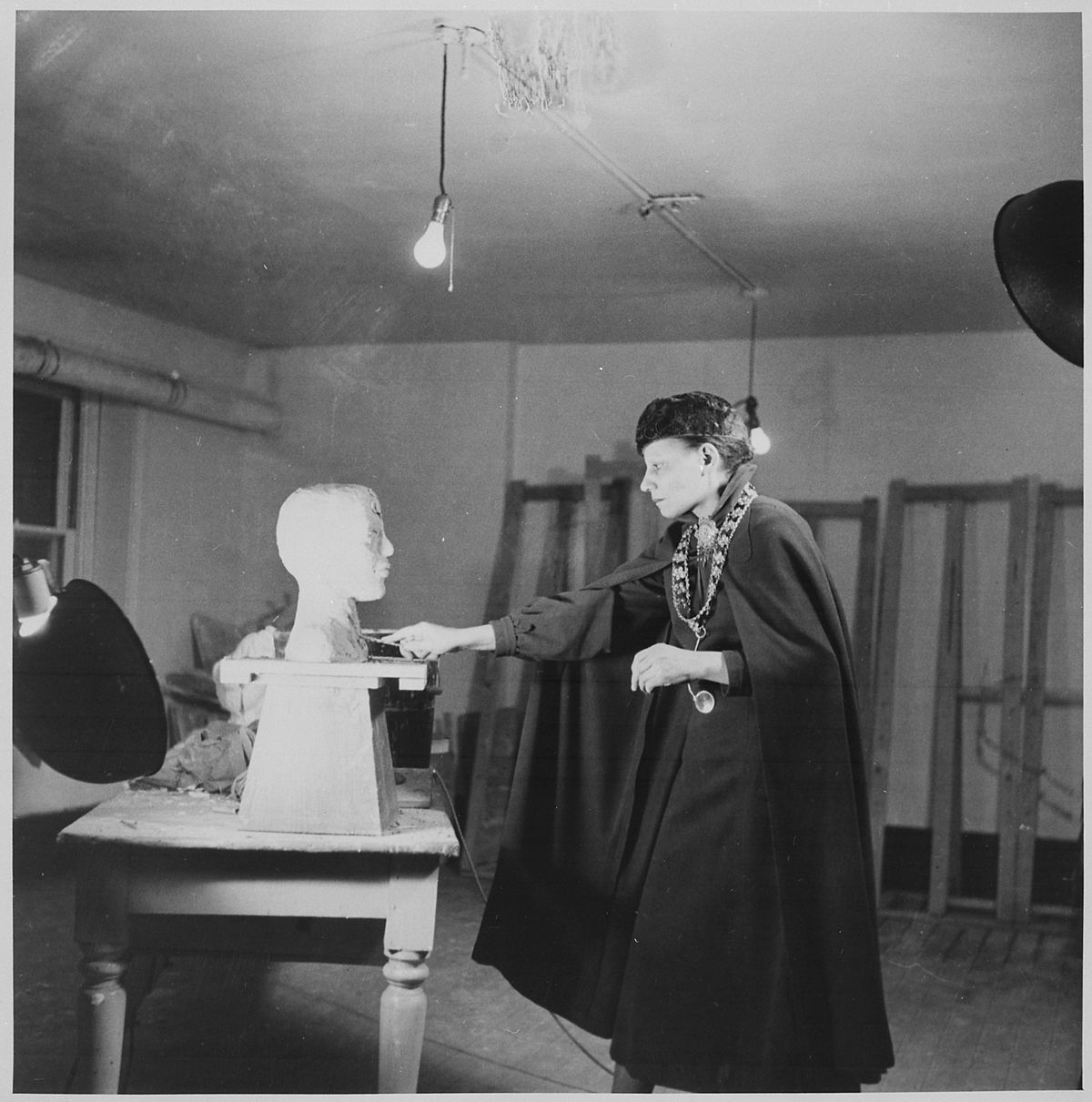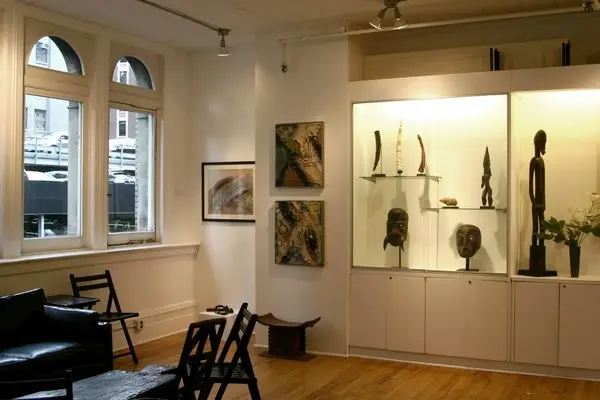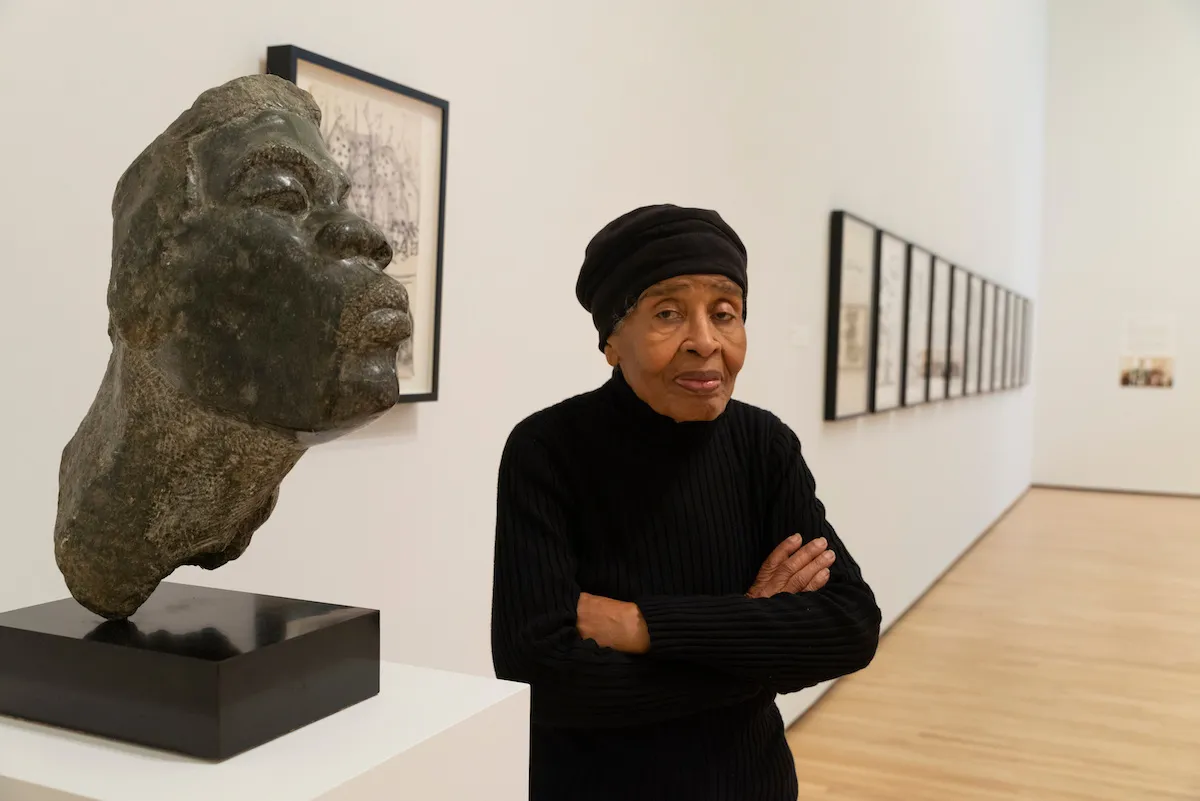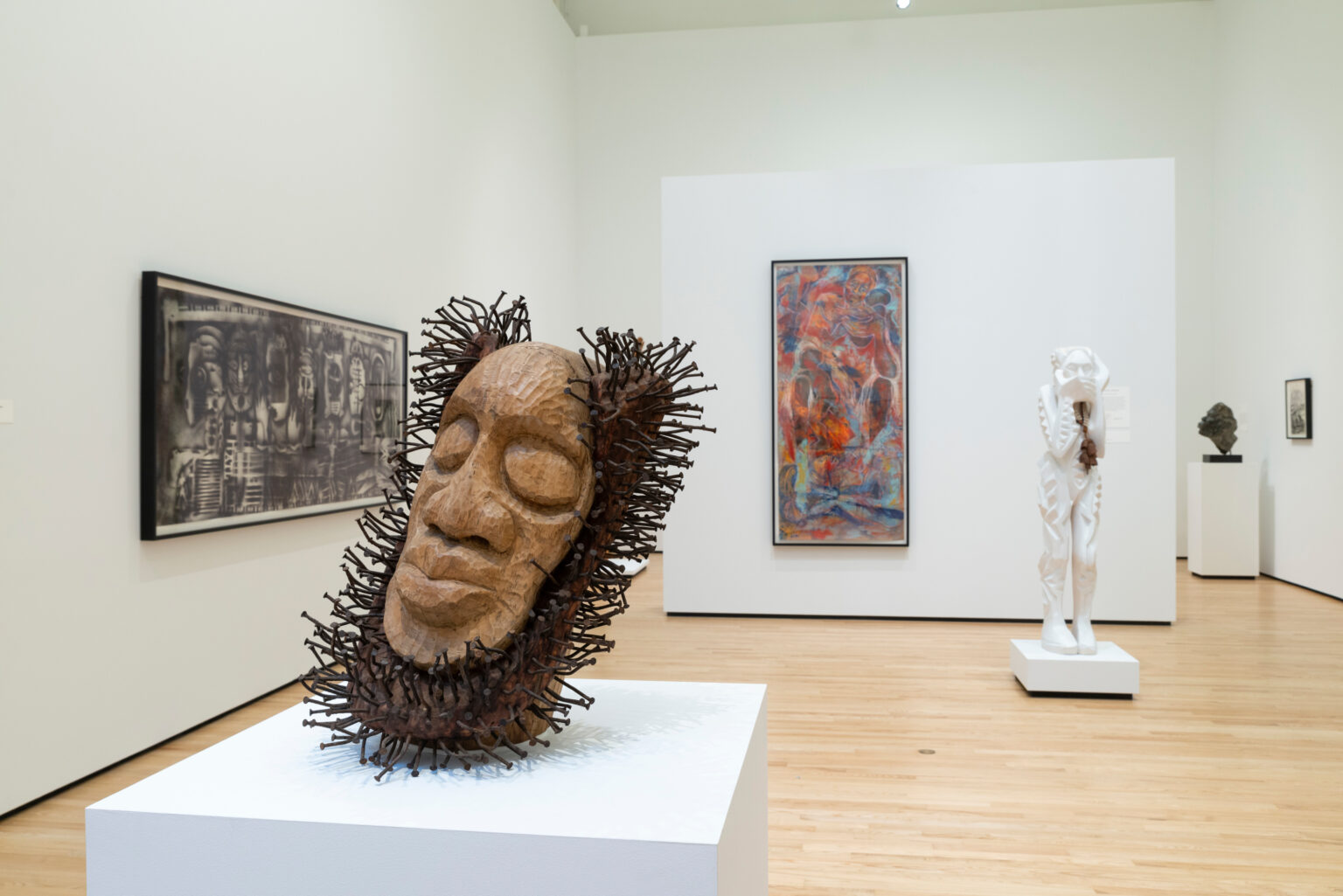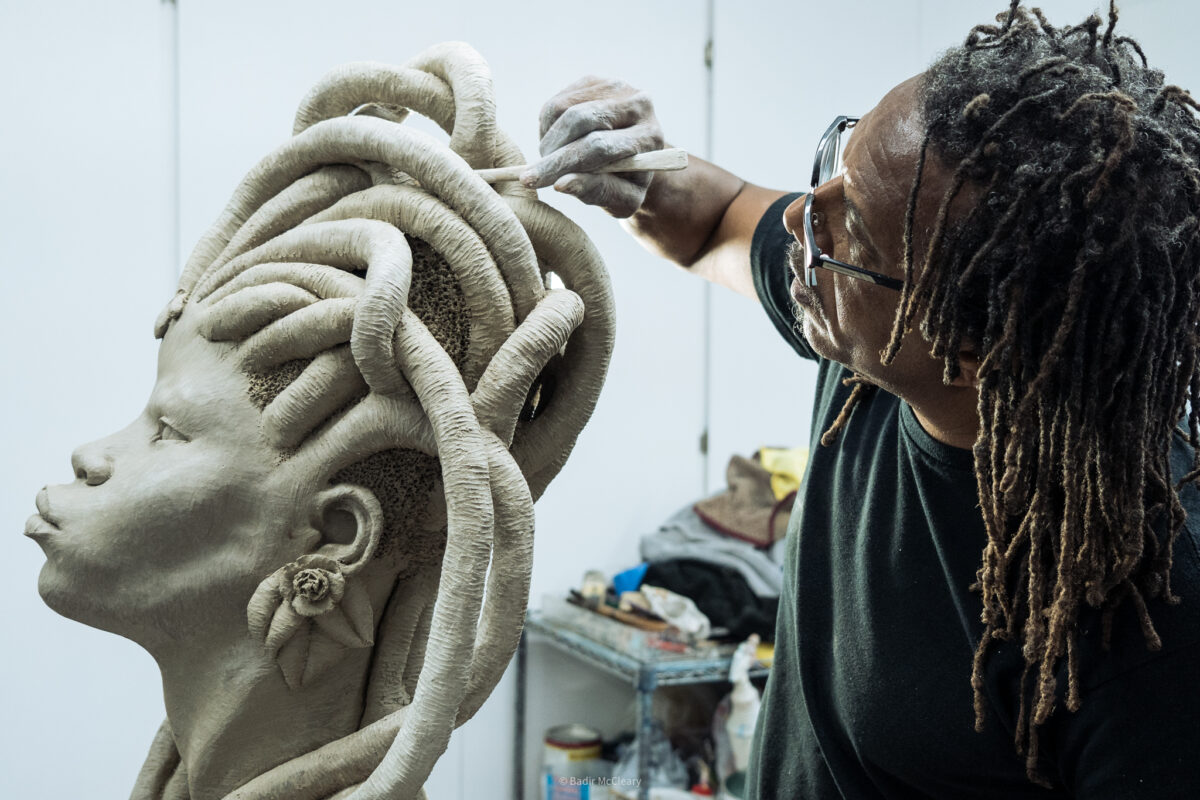Moveables at ICA Philadelphia
I recently visited ICA Philly to explore the exhibition titled “Movables,” featuring five remarkable artists: Jes Fan, Nikita Gale, Hannah Levy, Ken Lum, and Oren Pinhassi. These artists are reimagining functional design and its intimate connection to the human body. In the context of this exhibition, “movables” encompass any non-permanent articles within a building, such as furniture. As I wandered through the gallery, I couldn’t help but reflect on the idea that we, as visitors, are also “movables” in this space, constantly navigating to take in the diverse artworks on display. I found it intriguing how the exhibition’s press release failed to capture the depth of conceptual thought required to fully grasp and appreciate the artworks.
Upon entering the gallery, Jes Fan’s sculptural creations immediately caught my attention. They evoked images of precious gem-encrusted crustaceans, skillfully crafted and seamlessly blending into the surrounding environment, their forms flowing like liquid. Oren Pinhassi’s sculptures, crafted from sand, burlap, and plaster, transported me to a world where natural materials like earth, water, and fertilizer were the only tools needed for creation and growth. His work “Untitled, 2019” brought a smile to my face, as I initially mistook the green branch pads for mint leaves and the sculpture for toothpaste, only to discover its invitation to “oral activity.” His “One in the Mouth, Ine in the Heart, 2018” piece, composed of umbrellas, humorously represented being out of alignment, and the cup holder added a layer of whimsy, suggesting the collection of others’ problems.
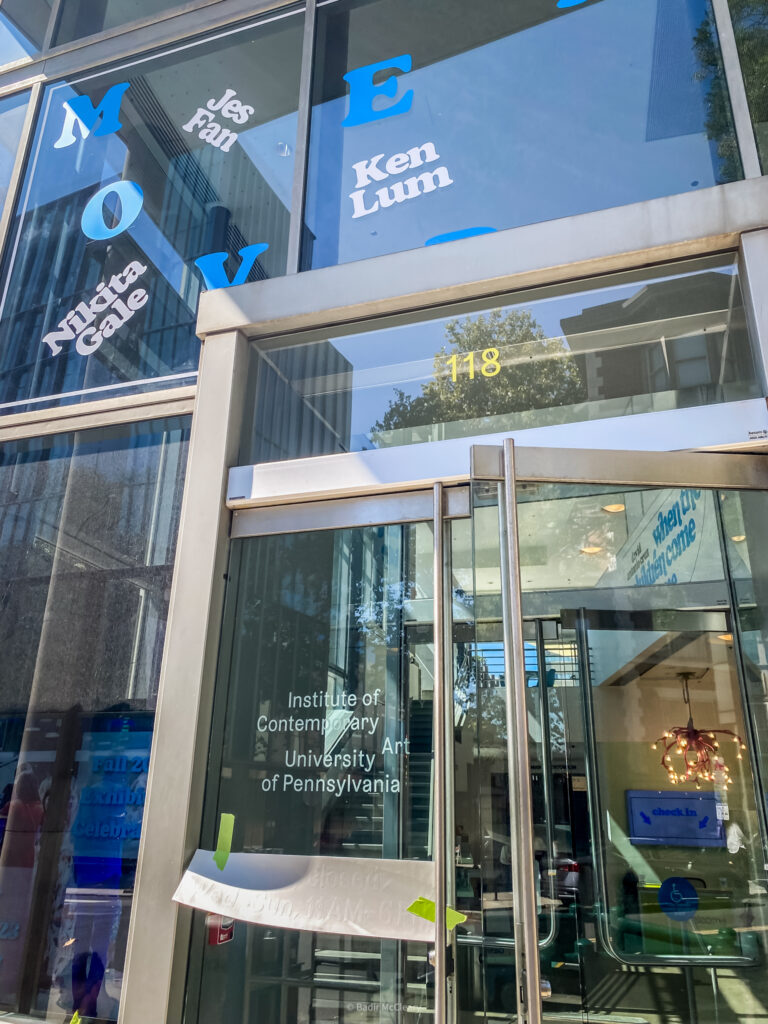
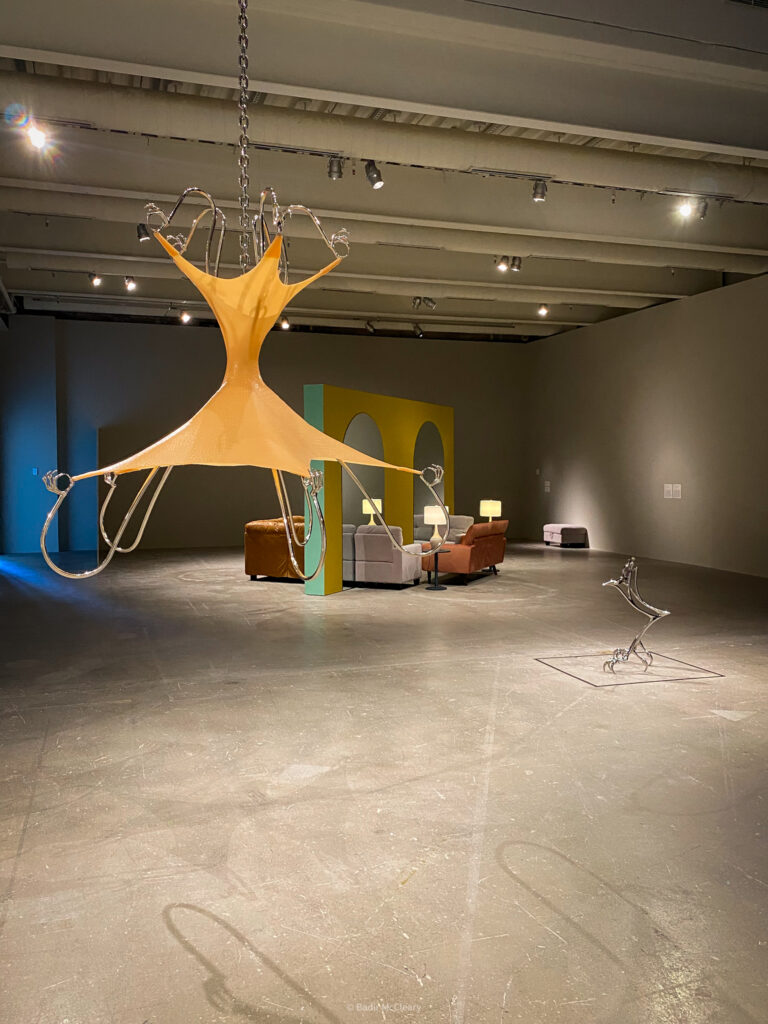
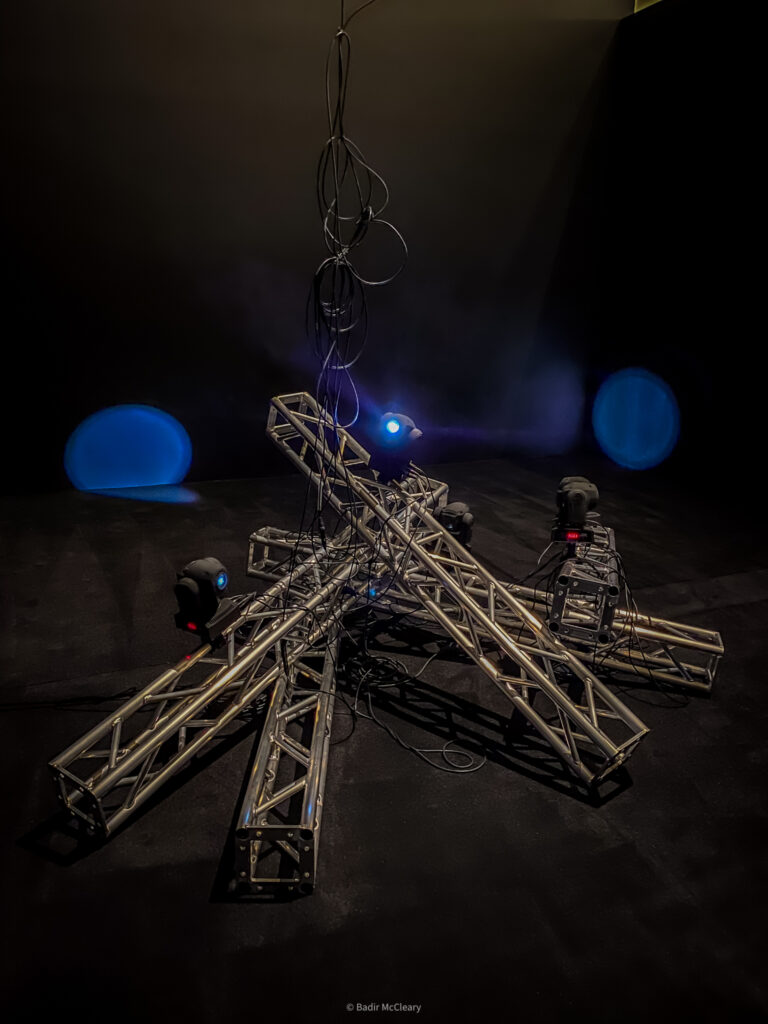
Hannah Levy’s sculptures conjured images of prehistoric bird traps with their fierce talon-like forms, juxtaposed against the gallery’s lighting. In “Untitled, 2021,” steel talons seemed to tear or stretch silicone resembling human skin, creating a captivating blend of discomfort and fascination. I regretted missing the performance associated with “Untitled, 2023,” as I imagined something epic involving steel heels. Ken Lum’s couch installation triggered nostalgic memories of childhood sleepovers and the excitement of assembling living room couches for acrobatics inspired by superhero films. The mirrors in the installation, a common fixture in many Black families’ homes in Philadelphia, added depth to the narrative. The setup, with one side promoting closeness and the other fostering individualized seating, subtly encourages reflection on familial bonds and the passage of time.
Nikita Gale’s work initially gave me the impression of being a production associated with the exhibition until a gallery attendant clarified its nature. During our conversation, we delved into the role of pop culture and the direction of light in selecting stars. It struck me how light, much like one’s time in the “spotlight,” moves swiftly—an allusion that resonated with Warholian sensibilities.
In conclusion, my visit to ICA Philly’s “Movables” exhibition was a thought-provoking journey into the world of contemporary art, where functional design intersects with the human experience. The artists—Jes Fan, Nikita Gale, Hannah Levy, Ken Lum, and Oren Pinhassi—each offered a unique perspective on this theme, leaving a lasting impression.
Words by Badir McCleary.
